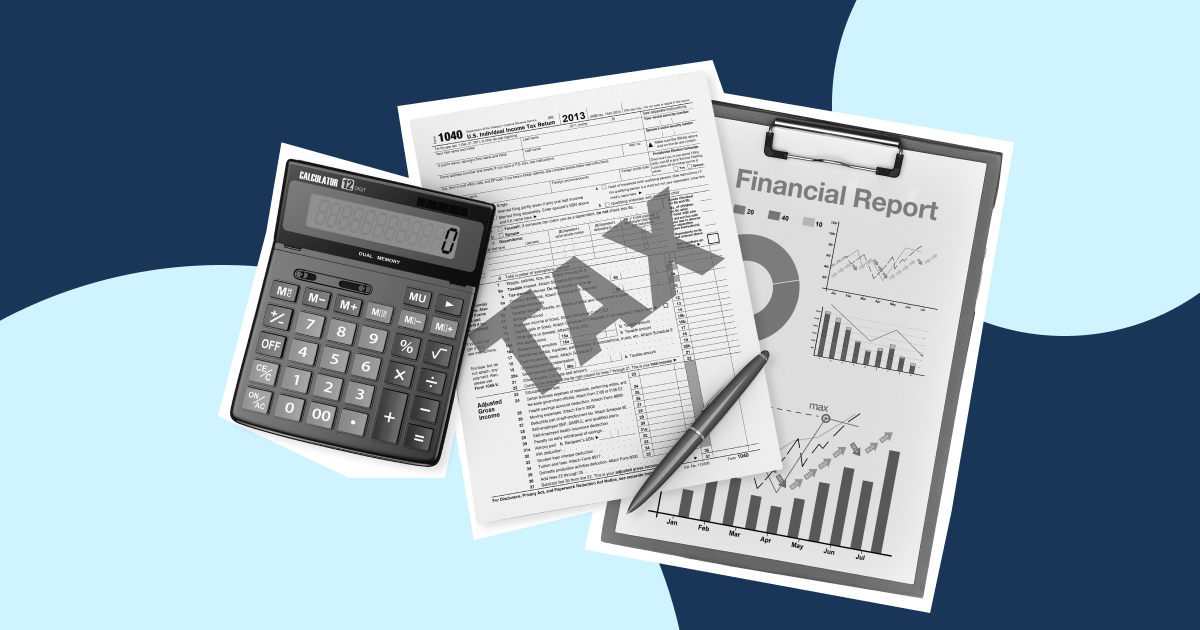Summary
Have you wondered what a company does when it finds itself in need of quick cash?
Let's start with an example.
Say you run a shoe store, and the bills that demand your attention right away are basically rent, utilities, and what you owe to suppliers. These are your "current liabilities."
Now, think about the money you have at your fingertips - the cash in your drawer, the investments you could quickly turn into cash, and the funds your customers owe you. These are your "quick assets."
The Quick Ratio is like your financial GPS. It tells you if you have enough money in the bank to pay your bills right away. If you do, it's good for your business, like a strong Quick Ratio. But if you don't have enough money and need to borrow or scramble to pay your bills, it's like having a low Quick Ratio, which means you might struggle with your short-term finances.
Now, let's move on to the meaning of Quick Ratio.
What Is a Quick Ratio?
The Quick Ratio, also called the Acid-test or Liquidity ratio, tells you how well your company can cover its short-term bills using assets that can turn into cash in a flash. These liquid assets include cash, marketable securities, and accounts receivable – stuff that can be converted to cash quickly.

You've learnt the meaning of quick ratio, but are you still curious why it's important? Let’s find out.
Why Is Quick Ratio Important?
Well, it is because Quick Ratio may prove valuable for real-life business situations.
First of all, think of it as a tool that helps you figure out if a company can pay its bills and handle financial emergencies without selling off its stock. If you're running a business or considering investing in one, you'd want to know if it's financially prepared for the unexpected.
But there's more to it. A solid Quick Ratio can also make a company attractive to lenders and creditors. They'll be more willing to give you loans or credit if you're financially sound and ready to meet your short-term obligations.
And it's not just about the numbers; maintaining a good Quick Ratio often goes hand in hand with efficient financial management. This means your business runs smoothly, and you're less likely to run into financial trouble.
Plus, you can use the Quick Ratio to see how your business stacks up against others in your industry. It's like a scorecard for financial health.
So, in terms of who uses this ratio and when it's used, business owners rely on it to stay financially prepared for unexpected expenses. Investors turn to it to assess a company's stability and financial strength. Lenders and suppliers consider it when deciding whether to extend credit or trust a company with their products. Financial experts include it in their toolkit for a comprehensive financial analysis. Even regulators and competitors keep a watchful eye on this number. As mentioned, it provides a quick glimpse into a company's short-term financial health, assisting a wide range of stakeholders in making informed decisions.
How Do You Calculate the Quick Ratio?
It is calculated using the following Quick Ratio formula:
Quick Ratio = (Cash and Cash Equivalents + Marketable Securities + Accounts Receivable) / Current Liabilities
Here, Cash and Cash Equivalents are highly liquid assets that include physical cash, bank account balances, and short-term investments that can be quickly converted into cash. They provide immediate access to funds.
Marketable securities are short-term, easily tradable investments that a company holds, such as bonds or other financial instruments with a readily available market. They offer liquidity and can be promptly converted into cash if needed.
Accounts receivable represents the money that a company is owed by its customers for goods or services that have been delivered but not yet paid for. While not as liquid as cash, accounts receivable are considered quick assets due to their short collection period.
Current liabilities are the company's short-term obligations, including short-term debt, accounts payable, and other financial commitments expected to be settled within a year.
Quick Ratio Analysis Example
Now that you know the Quick Ratio formula, let’s illustrate this with an example.
Here’s the financial information of a small tech company located in Singapore.
Cash and Cash Equivalents: 50,000 SGD
Marketable Securities: 20,000 SGD
Accounts Receivable: 30,000 SGD
Current Liabilities: 40,000 SGD
Now, let's use the Quick Ratio formula:
Quick Ratio = (50,000 (Cash) + 20,000 (Marketable Securities) + 30,000 (Accounts Receivable)) / 40,000 (Current Liabilities)
Quick Ratio = 100,000 / 40,000
Quick Ratio = 5:2
So, the Quick Ratio for this business in Singapore is 5:2. This means for every Singapore Dollar of short-term liabilities, the company has 2.5 SGD in quick assets that can be easily converted into cash to cover its immediate obligations. A Quick Ratio of 5:2 is generally considered healthy, indicating strong short-term liquidity for this business. It suggests they comfortably meet their current liabilities without relying on the sale of inventory or other less liquid assets.

The Analysis of the Quick Ratio
Now, let's explore how to analyse the Quick Ratio and understand what different values mean for your business.
What Is a Good Quick Ratio?
A "good" Quick Ratio shows your ability to cover your short-term liabilities with quick assets comfortably. In most cases, a Quick Ratio of 1 or higher is a positive sign. It means you have enough quick assets to pay off your immediate financial obligations without selling inventory or less liquid assets.
What Does a Quick Ratio > 1 Mean?
If your Quick Ratio is greater than 1 or 1:1, it's a good indicator. This suggests that you have more quick assets than current liabilities. Practically, this means you're in a short-term solid financial position. A Quick Ratio above one shows that you can quickly meet your immediate financial commitments and still have quick assets left, providing a financial safety net against unexpected expenses.
What Does a Quick Ratio < 1 Mean?
Conversely, if your Quick Ratio is less than 1 or 1:1, your quick assets aren't enough to cover your current liabilities entirely. This could raise concerns about your short-term liquidity. While a Quick Ratio of less than 1 doesn't necessarily mean immediate financial trouble, it suggests that you might need to rely on inventory sales or other funding sources to meet your short-term obligations.
Generally, you'll want a higher quick ratio. That's because the top part of the formula (your most liquid assets) should be greater than the bottom part (your current liabilities). A higher Quick Ratio means you can handle short-term needs and generate cash quickly during unexpected situations.
However, it's important to remember that a high Quick Ratio isn't always the best. Imagine you have a substantial amount of cash on hand. While it's good for emergencies, you should also consider putting that money to work for your business's growth or exploring new markets. It's a balancing act between meeting immediate cash needs and investing in your company's long-term potential.
How Your Company Can Use the Quick Ratio?
Your business can use the Quick Ratio in several ways to make informed financial decisions and improve its financial health:
- Assess Short-Term Liquidity: The Quick Ratio provides insights into your company's ability to meet short-term financial obligations. Use it to gauge your liquidity and ensure you have enough quick assets to cover immediate bills and expenses.
- Budgeting and Cash Flow Management: By understanding your quick ratio, you can better plan your budget and manage cash flow. It helps you anticipate short-term financial needs and ensures you have the necessary funds on hand.
- Risk Management: A strong Quick Ratio indicates a low risk of defaulting on payments. It can help you identify potential financial challenges and proactively mitigate them.
- Decision-Making: When considering new investments, loans, or credit arrangements, your Quick Ratio can influence your decisions. A healthy Quick Ratio may make it easier to secure financing on favourable terms.
- Stakeholder Confidence: A robust Quick Ratio can instil confidence in your shareholders, creditors, and potential investors. It demonstrates your financial stability and ability to meet short-term obligations.
- Comparative Analysis: Compare your Quick Ratio to industry standards or competitors' ratios to benchmark your financial health and identify areas for improvement.
Key Comparisons
Let's explore the differences between the Quick Ratio and several financial metrics, ensuring you're well-informed:
Quick Ratio vs. Current Ratio
In financial analysis, precision is your ally. It's essential to differentiate between two fundamental liquidity ratios: the Quick Ratio and the Current Ratio. The Quick Ratio zeroes in on immediate liquidity, considering highly liquid assets such as cash, cash equivalents, and accounts receivable. In contrast, the Current Ratio casts a wider net, encompassing all current assets, including inventory. This distinction gives you unique insights into your company's short-term financial health.
- When Should You Use the Current Ratio or the Quick Ratio?
When you need a more comprehensive understanding of your company's overall liquidity position, especially in situations where inventory turnover is not a significant concern, the Current Ratio is preferred. On the flip side, if you're looking for a more conservative measure, particularly suitable for industries with slow inventory turnover, the Quick Ratio is ideal. It specifically focuses on assets that can be swiftly converted to cash. Combining both ratios offers you a nuanced perspective on your ability to meet short-term obligations, taking into account considerations of inventory efficiency and the quick convertibility of assets into cash.
- What Is Considered a Good Quick Ratio and Current Ratio?
Determining whether your Quick Ratio or Current Ratio is "good" depends on factors like your industry and business model. A Current Ratio of 1 or higher is considered satisfactory, indicating your current assets cover your current liabilities. For the Quick Ratio, a measure of 1 or higher is considered good, reflecting your ability to meet immediate obligations without relying on inventory sales.
After Quick Ratio vs. Current Ratio, let’s compare the Quick Ratio to the liquidity score
Quick Ratio vs. Liquidity
Liquidity assessment score is pivotal in financial analysis for business leaders. The Quick Ratio, in this context, acts as a specific tool for evaluating your company's short-term financial strength. It hones in on assets that can be quickly converted into cash to meet immediate obligations. Whereas, liquidity score is like a grade that shows how easily a person or a company can turn their stuff into cash or pay their short-term bills.
Quick Ratio vs. Working Capital Ratio
Your company's working capital position is a critical aspect of its financial stability. The Quick Ratio and the Working Capital Ratio offer different perspectives on this matter. While the Quick Ratio is a precision instrument designed for highly liquid assets, the Working Capital Ratio provides a more comprehensive view of your company's working capital position by considering the entire spectrum of current assets and liabilities.
Quick Ratio vs. Acid Test
You might have noticed that the terms "Quick Ratio" and "Acid Test" are often used interchangeably in financial discourse. Both emphasise the importance of highly liquid assets in covering short-term liabilities. The similarity in these concepts underscores the significance of immediate liquidity in your company's financial operations.
Coming to Quick Ratio vs. Debt-To-Equity after Quick Ratio vs. Acid Test.
Quick Ratio vs. Debt-To-Equity
Comparing the Quick Ratio to the Debt-to-Equity Ratio reveals different dimensions of your company's financial health. As you know, the Quick Ratio assesses your company's immediate financial viability by measuring its capacity to meet short-term obligations using highly liquid assets while excluding inventory. However, the Debt-to-Equity Ratio provides insights into your company's long-term financial structure by comparing the total debt to shareholders' equity. A higher Debt-to-Equity Ratio may suggest increased financial risk, but it may also indicate the potential for enhanced returns.
Quick Ratio vs. ROI
The Quick Ratio and Return on Investment (ROI) serve distinct purposes in your financial analysis as a business leader. The Quick Ratio focuses on short-term liquidity, providing insights into your company's ability to cover immediate obligations with highly liquid assets while excluding inventory. In contrast, ROI is a profitability metric that assesses the efficiency and profitability of investments relative to their cost. A higher ROI signifies more effective capital utilisation and potentially more lucrative investments.
Quick Ratio vs. P/E Ratio
The final comparison is between the Quick Ratio and the Price-to-Earnings Ratio (P/E Ratio). The Quick Ratio offers insights into your company's short-term financial health by ensuring your ability to meet immediate obligations with highly liquid assets, excluding inventory. On the other hand, the P/E Ratio provides a perspective on how the market values your company's earnings by relating its stock price to per-share earnings. These metrics play distinct roles in comprehensive financial analysis, with the Quick Ratio emphasising liquidity and the P/E Ratio offering insight into market sentiment and earnings potential for a business leader like you.
What Are the Limitations of the Quick Ratio?
As a business owner, it's essential to know the Quick Ratio's limits when looking at your company's money and how easily you can pay bills. One limit is that it doesn't count the stuff you have to sell (like products or items in storage) when checking if you can quickly turn them into cash. Another problem is that it thinks all the money customers owe you will come in right away, even though it might take some time.
Also, it only looks at the money you have right now and the bills you need to pay soon. It doesn't think about the other bills you'll need to cover later on. And if your business has busy and slow seasons, the Quick Ratio might bounce up and down, which doesn't always show the complete picture of how well you're doing. Different industries have different money rules, and the Quick Ratio doesn't consider that.
It also doesn't say anything about how much profit you're making or if your business is healthy in the long run. If you owe money to suppliers, the Quick Ratio doesn't count that either.
So, even though the Quick Ratio is a helpful tool, it's important to use it alongside other financial measures. Also, consider the specific rules for your industry and your unique business situation to get a clear picture of your financial situation.
Want to Organise Your Business Finances Effortlessly?
Aspire Business Account can be a perfect asset for your business. It smoothly integrates with your client management tasks, making it easy to track project finances and spending across multiple clients. This not only frees up your time but also strengthens the connection between your account managers and finance teams.
Besides that, a solid expense management system is crucial for business success. It helps you maintain a vendor database, monitor terms and conditions, evaluate vendor performance, and ensure they meet your business needs. This simplifies vendor onboarding and administrative tasks.
With Aspire, you can handle vendor invoices and payments in one spot, removing the guesswork. It also helps you automate expense report generation and bill payments. Plus, it keeps you in the loop with spending alerts in real-time, making managing your business expenses a breeze.
Aspire also allows you to issue unlimited corporate cards, one for each team member, giving them the power to spend wisely. You can also set corporate card spending limits and merchant locks to keep control in your hands.
Don't wait – go ahead and open an account now!










%201.webp)


.webp)